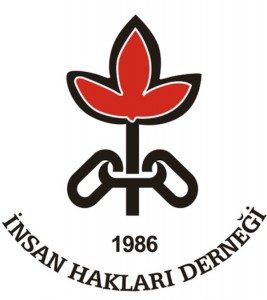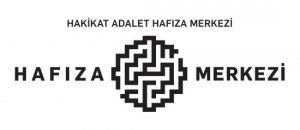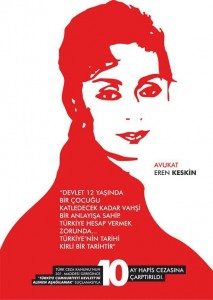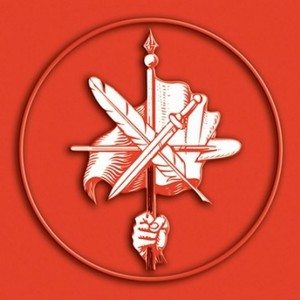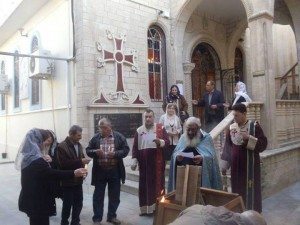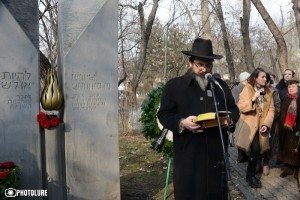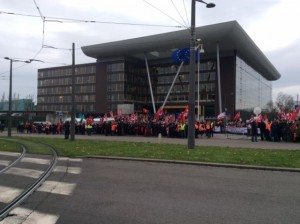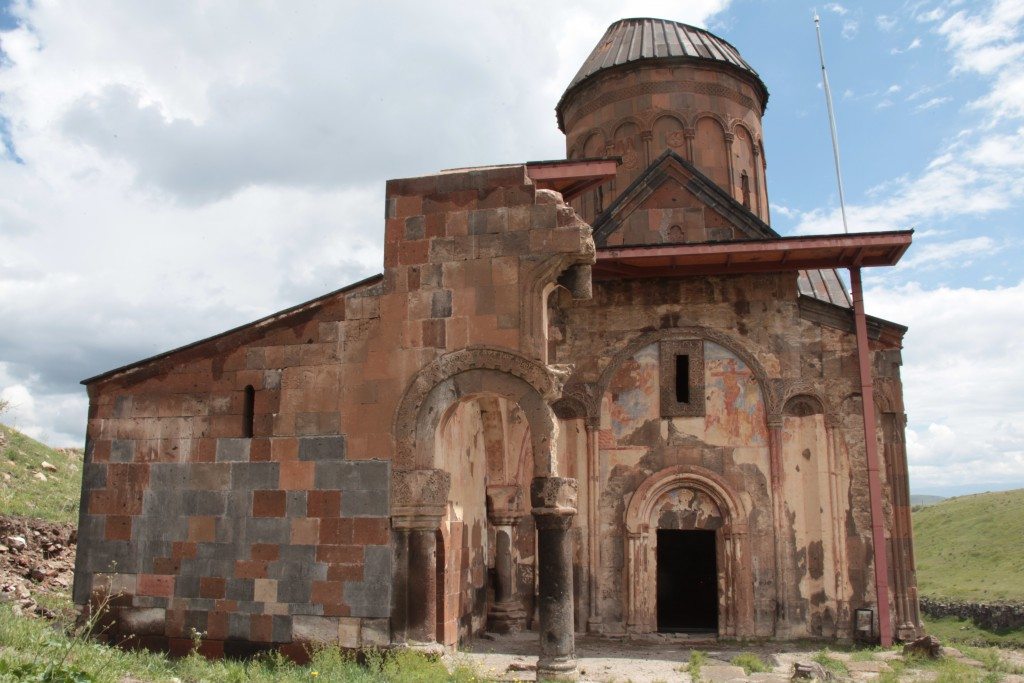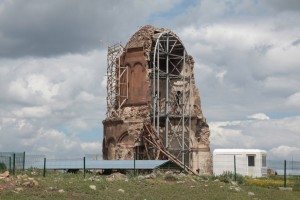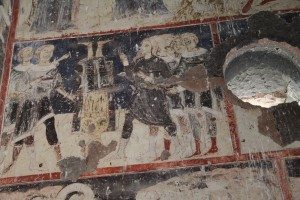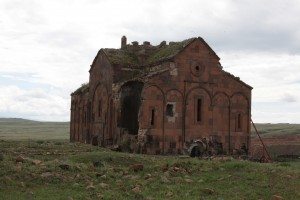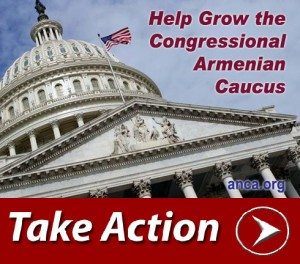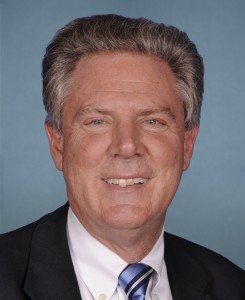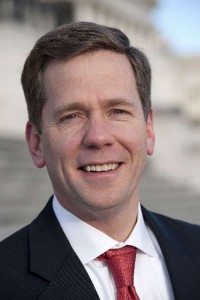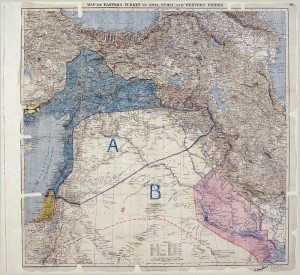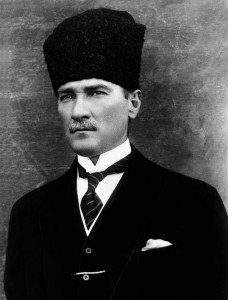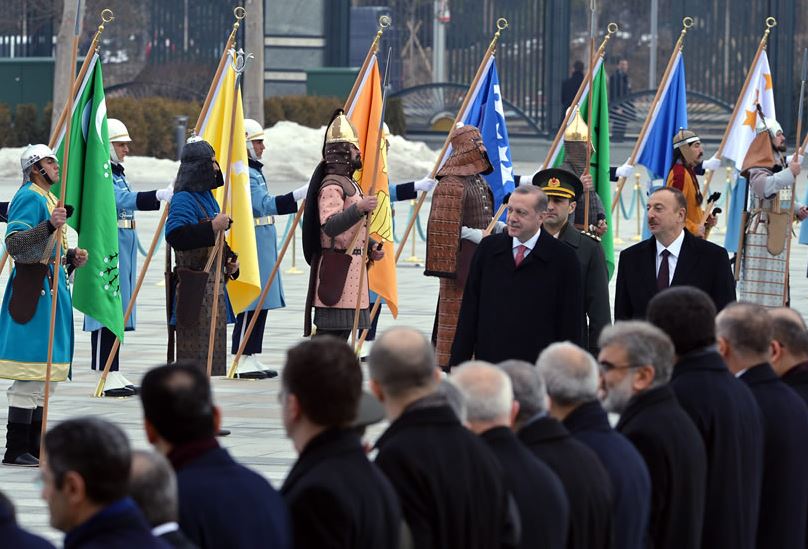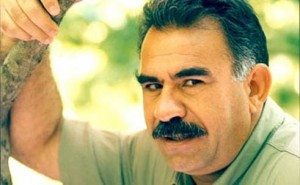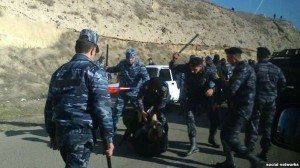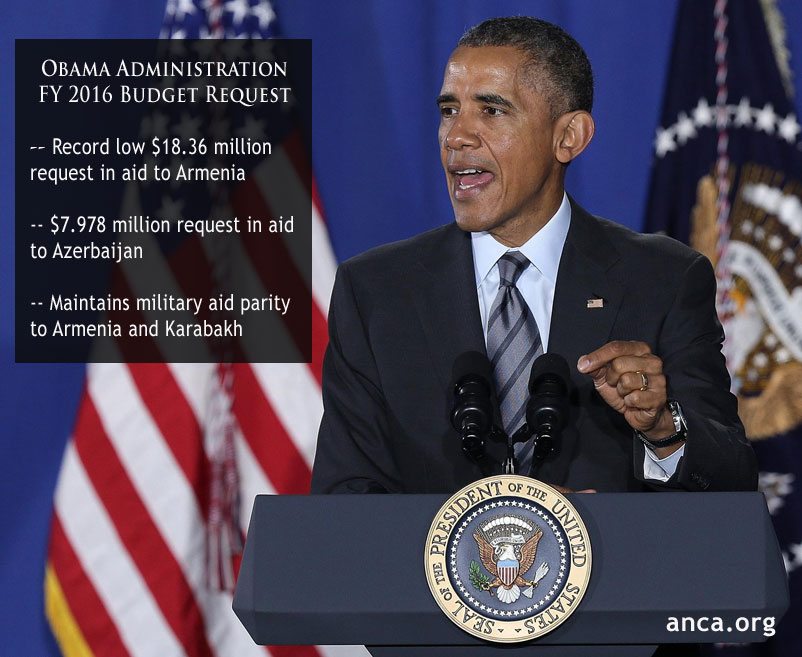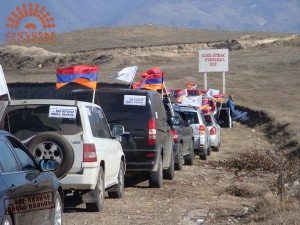Special for the Armenian Weekly
Major occurrences have studded the globe and civilizations— events, some good (such as the three monotheistic religions, though some argue to the contrary), and some evil (like the Great Flood which engulfed land, sparing the peaks, thus creating the Mediterranean islands like Santorini). These events have impacted mankind, and stored them in its collective memory.
History has not bypassed them; they are embedded there and will stay there till time immemorial.
In the past century, four distinct events have also impacted peoples and nations. They have extended in time to the present, and therefore become subjects of scrutiny.
A glance would show that despite their initial impact, they are transient, they could not endure. History is in the process of bypassing them as we speak.
It is imperative to look back in order to ascertain the present, and anticipate the future.
![Map of the Sykes–Picot Agreement between the British and the French. (Royal Geographical Society, 1910-15. Signed by Mark Sykes and François Georges-Picot, 8 May 1916.)]()
Map of the Sykes–Picot Agreement between the British and the French. (Royal Geographical Society, 1910-15. Signed by Mark Sykes and François Georges-Picot, 8 May 1916.)
To do that one is to start from the end of World War I, when Paris of 1919 was the epicenter of political activity. Together with Great Britain and the victorious Allies, the defeated Ottoman Empire (“The Sick Man of Europe”) was on the dissection table, and the sections were defined by Mark Sykes of Britain and George Picot of France, two bureaucrats of their foreign ministries. They had begun their work some two years before, apportioning what did not belong to France to France, and what did not belong to Britain to Britain, thus mandating Syria to France, and Palestine, Mesopotamia, and Cyprus to Great Britain. Lebanon, which administratively was part of Syria, became a separate entity under France.
A treaty signed on Aug. 10, 1920 in Sèvres, France, was labeled the “Treaty of Peace with Turkey.” It legitimized the Sykes-Picot plan. The thrust of this treaty was to divide the eastern Mediterranean land, and so it happened.
This division of land created more problems than anticipated. Borders between Syria and Iraq were arbitrarily drawn with an ordinary ruler into straight lines, thus dividing Shammar (a major Arab tribe; Syrians call them Muhjimms) into Syrian and Iraqi portions. The Hashimite King Faisal, who was crowned King of Syria, was victimized in a power and land duel between Britain and France; he was deposed by the French after six months of monarchy. In lieu of his family’s contribution (with Lawrence of Arabia) to the war on the side of the Allies, the British had to find a throne for him. After lengthy bargaining and arm twisting, they found a throne for him in newly formed Iraq, which included the disputed oil rich Mosul. He was crowned as King Faisal I of Iraq. His brother Emir Abdullah, later King of Jordan, was enthroned in East Jordan while Israel was being created to realize the Sykes-Picot treaty and the Balfour Declaration. Through some British arrangements, Abdullah Bin Hussein Al-Hashimi became King of Jordan, which was carved out of Palestine.
All this mess created by the Sykes-Picot treaty lasted for about a century, and the wars being waged now in the eastern Mediterranean, in one form or another, indicate the dismantling of what the Sèvres Treaty had proscribed. It is the death of the Sykes-Picot arrangements. History has bypassed Sykes-Picot.
***
The dismantling of the Ottoman Empire also dismantled the caliphate system of governance. The Arab Islamic world, which was an unwilling part of the Ottoman Caliphate, felt liberated of the oppression the system had brought. They had participated in the war against the Ottomans, with the help of Lawrence of Arabia.
![Mustafa Kemal Ataturk]()
Mustafa Kemal Ataturk
In Turkey, events gave birth to an army officer named Mustafa Kemal Ataturk. He launched a military campaign (some say instigated by European powers) to establish a modern, secular republic. He was successful in conquering vilayet after vilayet, through mass executions, beheading Mullahs, and subjugating the peoples of Turkey to his regime. The most memorable are his massacres of the people of Dersim (now Tunceli), and setting fire to the city of Smyrna with its majority Greek population. Eyewitnesses have told the story of Smyrna in horrific terms. According to them, the people jumped en masse into the sea to escape being burned alive. That was their only choice, since the city was being besieged from the east, the north, and the south by Mustafa Kemal’s forces. There were no routes of escape, but the hope of being rescued by the British Navy which was moored at harbor. They got no help, since it was 4 o’clock tea time for the officers, who were being serenaded by the British Navy violinists. Thousands of men, women, and children drowned. The British Navy could have helped, but did not.
Kurds also bore the brunt of the massacres, since they were not considered a “minority” to be protected by the Lausanne Treaty of 1923-24. This treaty, coined by Ismet Inonu, representing Kemal and the newly established Turkish Republic, and Lord George Curzon of Britain, countered the Sèvres Treaty, and did not recognize Kurds as a minority akin to the Christians and the Jews whose protection became mandatory by the same treaty.
Mustafa Kemal changed the Arabic letters, including that of the Koran, to the Latin alphabet. He passed revolutionary laws, some cosmetic, the most laughable being “Shapka Kanunu” (The Law of Hats), which mandated the change of the traditional Turkish fez with a European-style fedora hat, or a cap with a visor.
Mustafa Kemal established some degree of democracy by instituting a one-man, one-vote system for the first time. He established the Cumhuriyet Halk Partisi (CHP; the Republican People’s Party) which dominated the political life of the country for over a half century. Ulus, the official party organ, advanced their revolution by advocating the ideals of the new republic.
Two decades or so later, in an inner struggle, the CHP managed to convict the president of the country, Calal Bayar, and the prime minister, Adnan Menderes, to death; the life of the first was spared because of age, but the second was hanged in public. They were convicted for corruption. Additionally, they character-assassinated Prime Minister Menderes by claiming to have found a female garment in his safe.
The Republic of Turkey was part of the Baghdad Pact, an alliance between Turkey, Iraq, Iran, and Pakistan. The U.S. participated as an observer. The strategy was to contain the southern border of the Soviet Union. The pact had followed the Portsmouth Treaty of 1948, which had had the same gall and which had dissolved after a short existence.
Turkey then joined the North Atlantic Treaty Organization (NATO). The senior partners of NATO accepted it into their organization because of its geographical location.
Turkey could now boast of being a secular, democratic, and sovereign country. Sovereign it was; democratic it was, up to a point; but secular it was not. Its democracy extended to one-man, one-vote elections; however, it was terribly short on human rights, women’s rights, freedom of speech rights, and civil rights. Journalists were incarcerated for allegedly defaming Turkey, or some such excuse, as were novelists and writers. Carrying all this baggage, they had the chutzpah to apply for membership of the European Union. All these shortcomings and brutality continues as we speak.
Shapka Kanunu changed the headgear of the Turks, but could not change what was underneath it—the mentality.
Time, events, and fanatic religiosity gave birth to the most recent political setup, which in an attempt to institute a modern-era reactionary Islamic Caliphate, propelled fanatic political fervor into the overwhelming Turkish majority of the country. Turkish President Recep Tayyip Erdogan did not have to push hard. People were ready.
![Turkish President Recep Tayyip Erdogan greeted Azeri President Ilham Aliyev on Jan. 15, in the presence of 16 soldiers dressed in ceremonial costumes representing various Turkic people in history. (Photo: Official website of the President of Turkey)]()
Turkish President Recep Tayyip Erdogan greeted Azeri President Ilham Aliyev on Jan. 15, in the presence of 16 soldiers dressed in ceremonial costumes representing various Turkic people in history. (Photo: Official website of the President of Turkey)
The newly formed Adalet ve Kalkinma Partisi (AKP; Justice and Development Party) was briefly headed by Abdullah Gul, who became president of Turkey. He was followed by a shrewder politician, Recep Tayyip Erdogan, who served as prime minister, and now president, elected by democratic, transparent elections. This election—with its impressive majority, and of a person who has the Islamic Caliphate as his raison d’être—reflects the reactionary mentality, orientation, and psychology of the electorate.
Erdogan has pursued policies that are designed to bury Kemalism, and establish an Ottoman-style Caliphate. Now, he has invited presidents of all countries, including the Armenian president, to attend celebrations of the Turkish military victory over Great Britain in the Battle of Gallipoli (Çanakkale) on April 24, 2015, the very day that Armenians commemorate the start of the Armenian Genocide. This is more proof of his desire to advance the ideas of an Ottoman Caliphate. He has succeeded. Kemalism is dead. History has bypassed it.
Erdogan has pursued policies that are designed to bury Kemalism, and establish an Ottoman-style Caliphate…. He has succeeded. Kemalism is dead. History has bypassed it.
***
While this is going on in Turkey, other events are disrupting the region. Characterized as the Arab Spring, the events started with revolutionary fervor from Tunis, when an ordinary man, a street vendor, set himself on fire and died in protest of the corrupt and oppressive government of Tunis. This was the kindling that started an uncontainable fire which engulfed the super-flammable Arab countries. Sparks soon started major fires in Libya, Egypt, Syria, and Yemen. Iraq was in a state of disarray since Saddam Hussein’s demise in 2003. Sunni-Shia enmity and armed conflicts continue. These two sects have not been able to solve their differences since Hussein’s (Prophet Muhammad’s grandson) murder around one and a half millennia ago. War between them was waged by proxy, Iran promoting its geopolitical interests in the Arab countries through the Shia communities in Lebanon, Syria, and of course Iraq; and Saudi Arabia financing Sunni causes.
The ever-opportunist Erdogan, advancing his plans for a misogynist caliphate, acted as the champion of the Arab world by promoting his stance as the defender of Palestine. He accused Israel of killing civilians in Gaza, and pointed out their inhumane treatment of the Palestinians, while continuing to deny the Armenian Genocide, which his predecessors had committed. He unconditionally supported the Muslim Brotherhood in Egypt and their leader, now deposed Mohamed Morsi. Egypt, with its newest administration, retaliated by bringing up the Armenian Genocide as proof of Turkey’s criminality, and inhuman treatment of its minorities.
Erdogan dashed out of an international conference in Davos in 2009, protesting the unequal allotment of his time in favor of Israel. In an attempt to provoke Israel by breaking its embargo of Gaza, he sent the Mavi Marmara ship loaded with so-far-unknown cargo, which was blocked by the Israeli Navy, resulting in the deaths of nine Turkish sailors.
Looking at the Arab world today, it is certain that the Arab Spring is dead. History has bypassed it.
***
In my study hangs a framed, full-paged interview conducted by a journalist for the newspaper Ozgur Politica, dated April 30, 1996. He had titled it, “The Armenian and Kurdish Causes Are Interrelated.” He was echoing my speech in the Kurdish Parliament in Exile, in Brussels, where I had emphasized our rights to Western Armenia according to the provisions of Section VI, Article 88-93 of the Sèvres Treaty and President Woodrow Wilson’s map.
The speech was timely because of the behind-the-scenes political activities advanced by Germany, Turkish President Turgut Ozal, and Professor Dogu Ergil to formulate some sort of autonomy within the boundaries of Turkey, for the Kurds. That meant incorporating Western Armenia—the six vilayets as specified by the Sèvres Treaty—into the proposed Kurdish territories. This was unacceptable, and I was there to say so.
![Abdullah Ocalan]()
Abdullah Ocalan
The Kurdish cause had turned into a liberation struggle through military operations in 1984, headed by Abdullah Ocalan. His party, a Marxist-oriented party, was called the Kurdistan Workers’ Party (PKK).
The war had claimed some 35,000 casualties from both sides, and was a major destabilizing situation for Turkey as a country, and its chauvinist Turkic regime. After all, Mustafa Kemal and his new republic had denied the national identity of the Kurds, labeling them “Mountain Turks.”
The Kurdish struggle for self-rule had started in the mid-19th century by Prince Badrkhan, who had waged a war against the central Ottoman Caliphate by recruiting some 40,000 Armenians and Kurds. He had failed. Successive rebellions by some sheikhs and chieftains like Sheikh Sa’id and Sheikh Obeidullah were crushed. In the first decades of the 20th century, Mustafa Kemal Ataturk committed genocide against the Kurds, especially the people of Dersim. He literally snatched children from the bosom of their mothers, and placed them in remote places to be raised as Turks. His regime made it illegal to speak or sing in Kurdish. He made it illegal to celebrate the most popular celebrations of Newroz.
Some 3,000 Kurdish villages were destroyed. Three million Kurds were displaced and became refugees, most settling in shanty towns around Istanbul.
Failing in the battlefield, Turkey brought the fight to the villages and communities. The government formed the Village Guards (Korucu) from loyal Kurdish tribes, to brutalize their fellow Kurds. They killed and raped, and brutalized the men, women, and children. In one incident they snatched a bride, made her strip bare, and raped her in front of her parents and the villagers.
The Erdogan regime, having failed to defeat the PKK, turned to the “Ver Kurtul” (Pay and be free) policy. They negotiated with Ocalan, who was captured in Kenya, and imprisoned in the Island of Imrali. They allowed the celebration of Newroz last year, and gave the Kurds a radio station. They allowed the formation of a legal political party, the Halkin Democratic Partisi (HDP; Peoples’ Democratic Party), which opened offices in Washington. The head of the party, Selahattin Demirtas, ran for the office of Turkey’s presidency against Erdogan. He scored 10 percent of the vote. Kurds did not vote for him, and Erdogan won with the help of the Kurdish politician Masoud Barzani, who had shared the podium with him in Diyarbakir.
Abdullah Ocalan is praising Kurdish participation in the Battle of Gallipoli as proof of Kurdish loyalty to the very government that has caused his people so much death and destruction. From all indications, it is evident that the Kurdish Revolution is dead…
Meanwhile Abdullah Ocalan is praising Kurdish participation in the Battle of Gallipoli as proof of Kurdish loyalty to the very government that has caused his people so much death and destruction.
From all indications, it is evident that the Kurdish Revolution is dead, and may be replaced by evolution. It becomes the fourth bypass in the history of the past century.
Are the Armenian and Kurdish causes tied together? That is for the future to tell!
The post Astarjian: A Quadruple Historic Bypass appeared first on Armenian Weekly.
